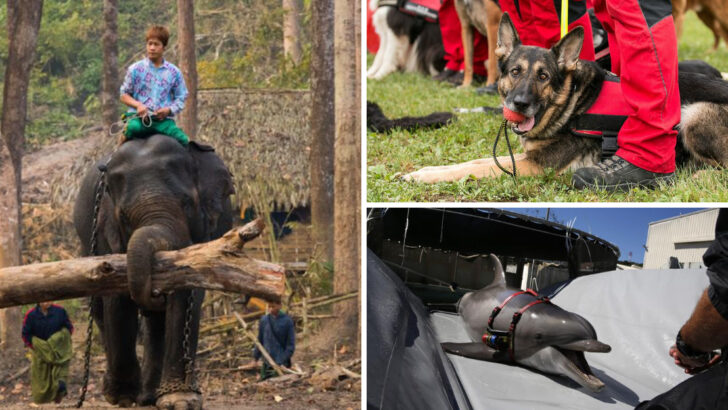Some animals punch the clock just like the rest of us—but their job descriptions are anything but ordinary. From beavers acting as water engineers to dogs sniffing out disease, animals play a bigger role in human society than most people realize.
Dolphins work as underwater spies, rats detect landmines, and llamas guard livestock from predators. These creatures aren’t just performing tricks—they’re saving lives, protecting communities, and even advancing science. And let’s be honest, some of these roles are downright bizarre.
What makes these animal jobs even more fascinating is that they rely on natural instincts. Whether it’s a cat patrolling a bookstore for mice or an elephant hauling logs through a dense forest, these animals aren’t just trained workers—they’re born professionals.
Get ready to meet 17 incredible animals with careers that will make you rethink who really runs the world. Spoiler: It’s not always humans!
Sniffer Dogs at Airports
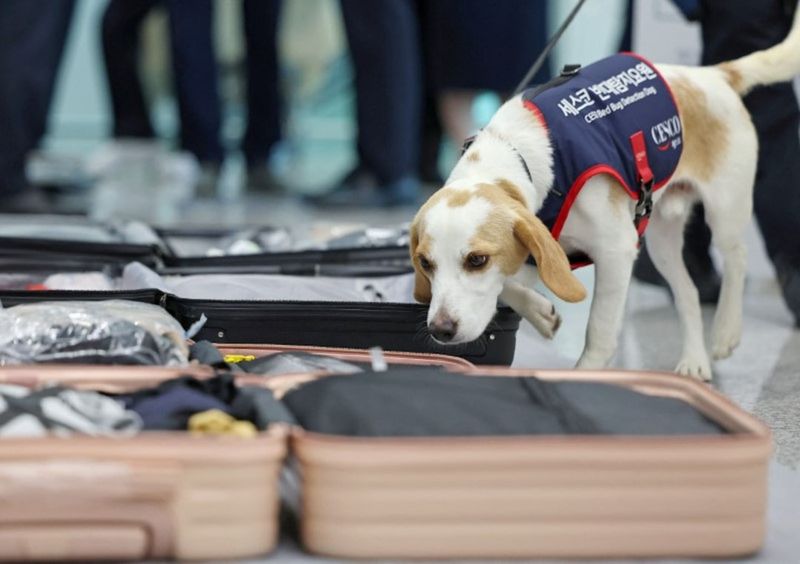
Sniffer dogs, usually breeds like German Shepherds and Labradors, are trained to detect substances like drugs, explosives, and even cash at airports. Their keen sense of smell makes them an invaluable asset in maintaining security.
These dogs undergo rigorous training to identify specific scents, often working alongside law enforcement personnel. Their ability to cover large areas quickly helps in efficiently screening passengers and luggage.
Their role extends beyond mere detection; they also provide a deterrent effect, reducing the likelihood of illegal activities. This helps in safeguarding travelers and ensuring safety.
Bees as Pollinators
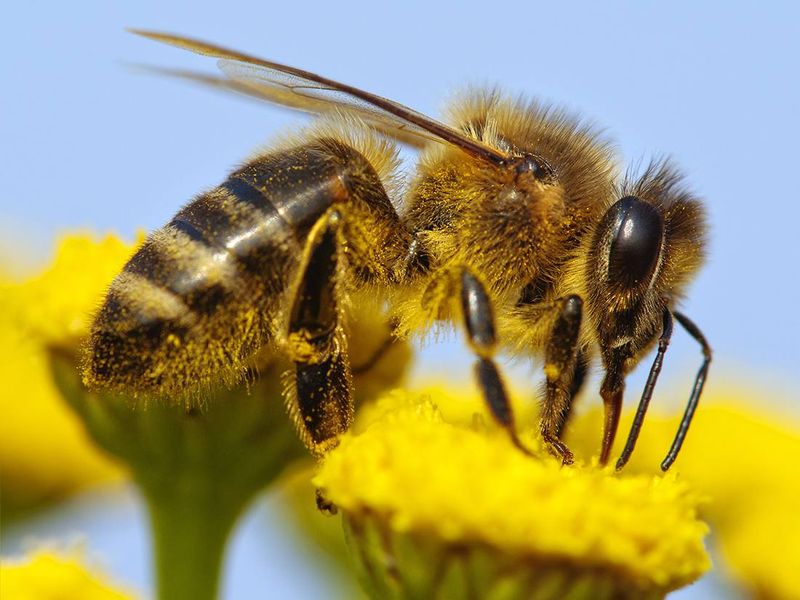
Bees are crucial pollinators, responsible for the growth of many fruits, vegetables, and nuts. Their job involves transferring pollen from one flower to another, facilitating plant reproduction.
This natural process is essential for the production of about one-third of the food we consume. Without bees, the agricultural industry would face significant challenges, impacting global food supplies.
Beyond pollination, bees contribute to biodiversity and environmental health, supporting ecosystems worldwide. Their role is pivotal in maintaining the balance of nature, highlighting the intricate connections within our environment.
Pigeon Message Carriers
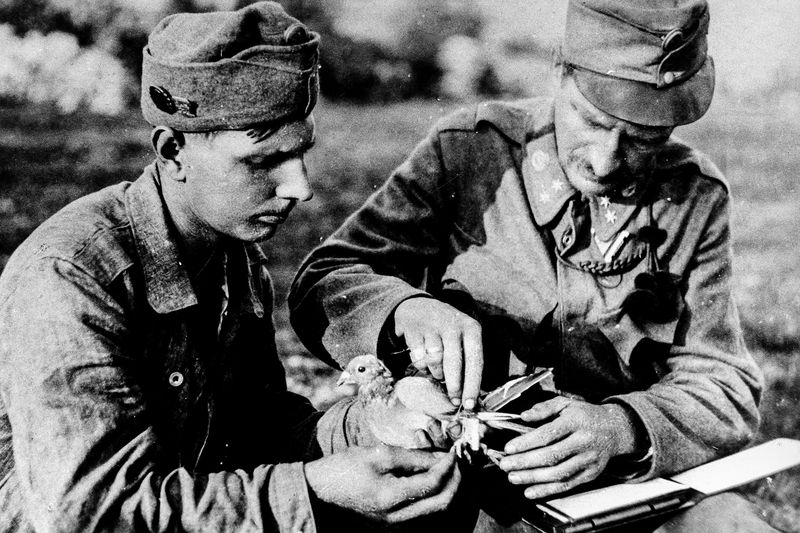
Pigeons have served as message carriers for centuries, renowned for their homing abilities. This role involves delivering messages across long distances, often in wartime scenarios.
These birds are trained to return to their home lofts, carrying crucial information. Their reliability and speed made them invaluable before the advent of modern communication.
Although technology has largely replaced them, pigeons highlight the innovative ways humans have utilized animal instincts. Their historical significance remains a testament to the diverse roles animals have played in aiding human endeavors.
Therapy Horses
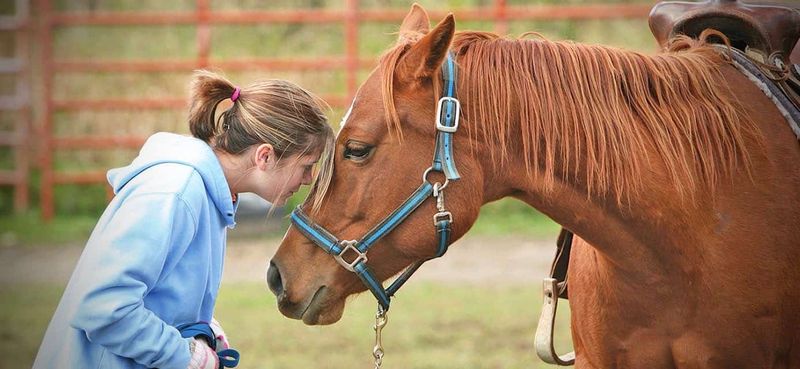
Therapy horses, particularly miniature breeds, play a unique role in therapeutic settings, providing comfort and emotional support. Their calm demeanor helps individuals with mental health challenges, autism, and physical disabilities.
These animals facilitate interaction, encouraging communication and social engagement. Their presence can lower stress levels, promote relaxation, and improve mood.
By visiting hospitals, schools, and care facilities, therapy horses offer a gentle, non-judgmental presence, making them ideal companions for therapeutic purposes. This remarkable interaction showcases the profound impact animals can have on human well-being.
Rat Landmine Detectors
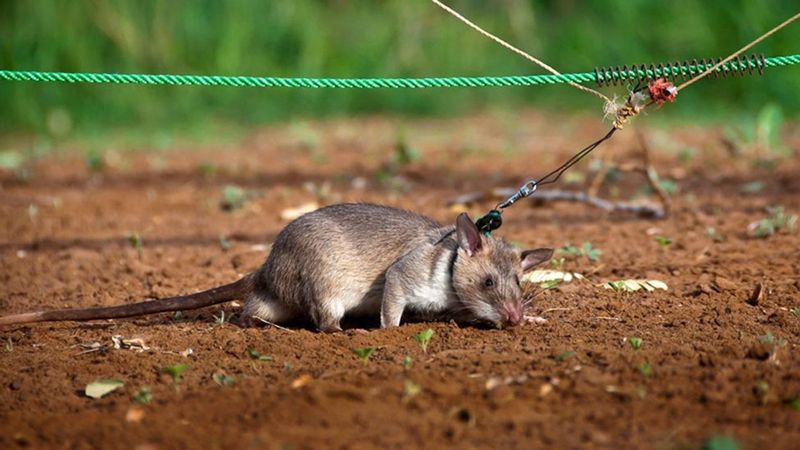
African giant pouched rats are surprisingly adept at detecting landmines, thanks to their acute sense of smell. Trained to identify explosive compounds, these rats contribute to demining efforts in war-torn regions.
Their lightweight bodies prevent detonation, allowing them to safely navigate minefields. This makes them more efficient and safer than traditional methods.
These rats work alongside human handlers, demonstrating the extraordinary potential of animals in humanitarian efforts. Their contribution significantly reduces risks, saving lives and enabling safe land usage. Their work is truly an unexpected yet vital service.
Cats in Therapy Sessions

Cats have found a unique place in therapy sessions, offering comfort and emotional support to individuals. Their soothing presence can help reduce anxiety and stress, creating a more relaxed environment.
Therapy cats are particularly effective for people who might find social interactions challenging, such as those with autism or PTSD. Their gentle nature encourages trust and communication.
By being a non-judgmental companion, they foster emotional healing. The use of therapy cats highlights the therapeutic power of animals in diverse settings, enhancing mental health support.
Elephants as Loggers
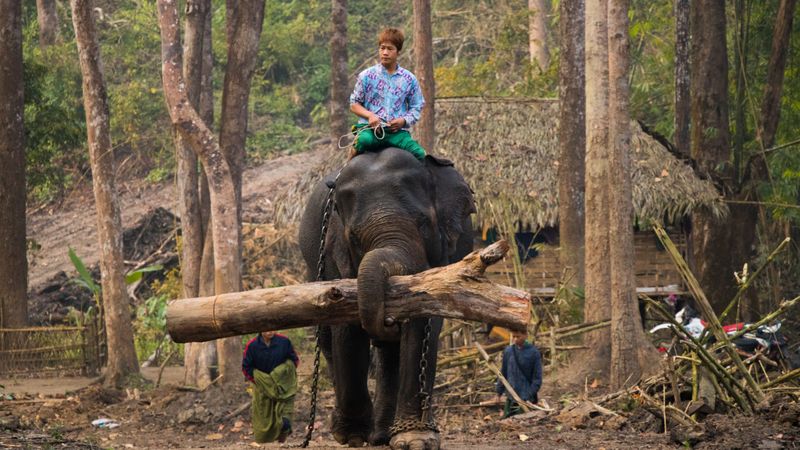
In some regions, elephants are employed as loggers, using their strength and intelligence to move heavy timber. Their ability to navigate difficult terrain makes them invaluable in forestry operations.
These animals work closely with mahouts, forming strong bonds that facilitate communication and cooperation. Their work is environmentally friendly compared to machinery, minimizing forest damage.
The use of elephants in logging underscores the diverse applications of animal labor, balancing traditional practices with modern needs. Their contribution is significant in sustainable forestry management.
Sheep as Lawn Mowers
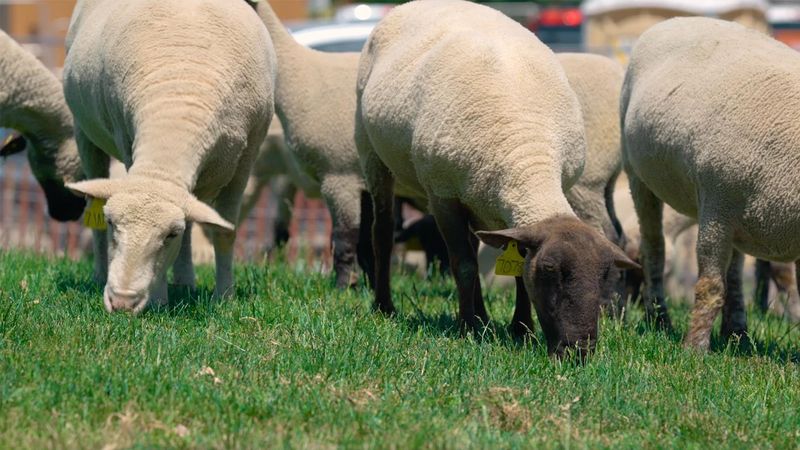
Sheep are increasingly used as natural lawn mowers in urban environments, maintaining grasslands and parks. Their grazing habits help control vegetation growth without the need for machinery.
This eco-friendly method reduces emissions and noise pollution, while providing natural fertilization through their droppings. Sheep grazing is a sustainable alternative benefiting both the environment and municipal budgets.
Their presence in cities also connects urban dwellers to nature, enhancing community engagement with green spaces. This innovative approach exemplifies practical solutions to environmental challenges.
Ravens as Trash Collectors
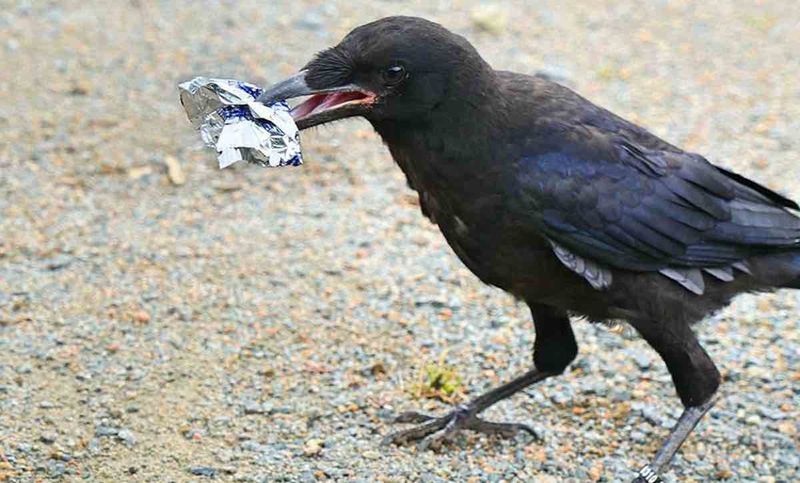
Ravens are being trained to collect trash in parks, using their intelligence to identify and pick up litter. This initiative helps keep public spaces clean while engaging these intelligent birds in useful tasks.
Their training involves rewarding them with food for every piece of trash they deposit in designated bins. This positive reinforcement encourages continued participation.
Ravens’ natural problem-solving skills and adaptability make them excellent candidates for such roles. Their contribution not only aids in waste management but also raises awareness about environmental stewardship.
Dolphins in Naval Operations
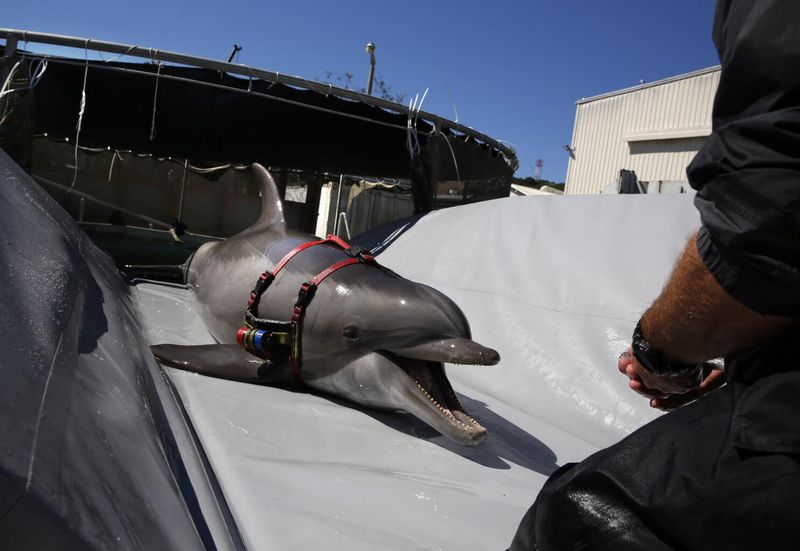
Dolphins are enlisted in naval operations, leveraging their echolocation abilities to detect underwater mines and enemy divers. Their speed and agility make them ideal partners in marine defense.
These animals undergo specialized training to identify threats, often working in tandem with naval personnel. Their natural instincts and communication skills enhance operational effectiveness.
The use of dolphins highlights the synergy between technology and animal abilities, contributing to maritime security. Their involvement is a testament to the diverse capabilities animals offer in complex environments.
Ferrets as Cable Runners

Ferrets, with their slender bodies, are used to run cables through tight spaces in buildings and aircraft. Their natural curiosity and agility make them suitable for this uncommon task.
This method is especially useful in situations where traditional cable installation is challenging. Ferrets are trained to pull lightweight ropes or wires, which are then used to guide cables.
Their contribution highlights innovative approaches to problem-solving, showcasing how animals can assist in technical endeavors. This unique job exemplifies the creative use of animal traits in practical applications.
Seals in Underwater Research
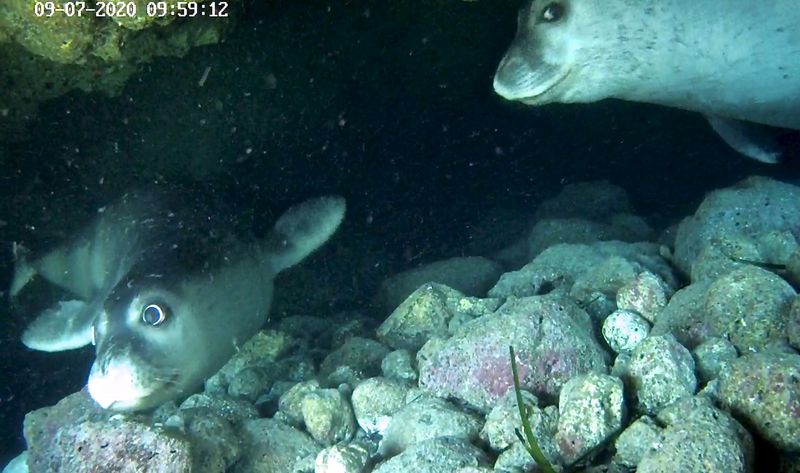
Seals play a crucial role in underwater research, equipped with sensors and cameras to collect data in harsh environments. Their ability to dive deep and navigate icy waters is invaluable to scientists.
These animals help gather information on marine life, ocean currents, and climate change effects. Their participation provides insights that might otherwise be inaccessible.
Utilizing seals in research highlights the collaboration between science and nature, enhancing our understanding of marine ecosystems. Their involvement is a testament to the resourcefulness of integrating animals into scientific exploration.
Cattle as Firebreak Creators
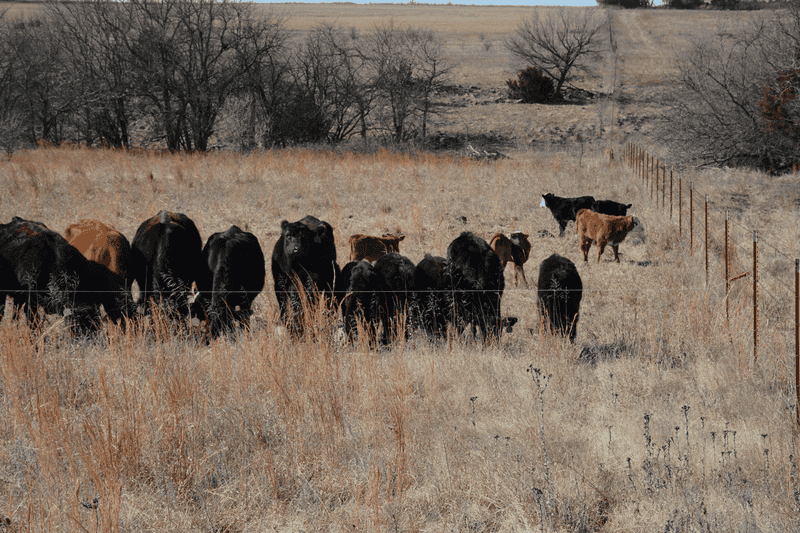
Cattle are employed to create firebreaks by grazing on dry vegetation, reducing fuel for wildfires. Their grazing habits help manage landscapes, lowering the risk of uncontrolled fires.
This method is part of a broader strategy for sustainable land management, integrating livestock into ecological practices. The use of cattle in this context supports both agricultural productivity and environmental protection.
Their role as firebreak creators showcases the innovative ways animals contribute to managing natural resources and mitigating disaster risks. This practice underscores the importance of animals in ecological balance.
Owls as Pest Control

Owls serve as natural pest control agents, preying on rodents that threaten crops and storage facilities. Their hunting skills help maintain agricultural productivity by controlling pest populations.
Farmers benefit from their presence, as owls reduce the need for chemical pesticides, promoting an eco-friendly approach to agriculture. These birds are particularly active at night, providing round-the-clock protection.
The use of owls in pest control highlights the harmonious integration of wildlife in farming practices, supporting biodiversity and sustainable agriculture. Their role underscores the benefits of embracing natural solutions.
Dogs in Search and Rescue
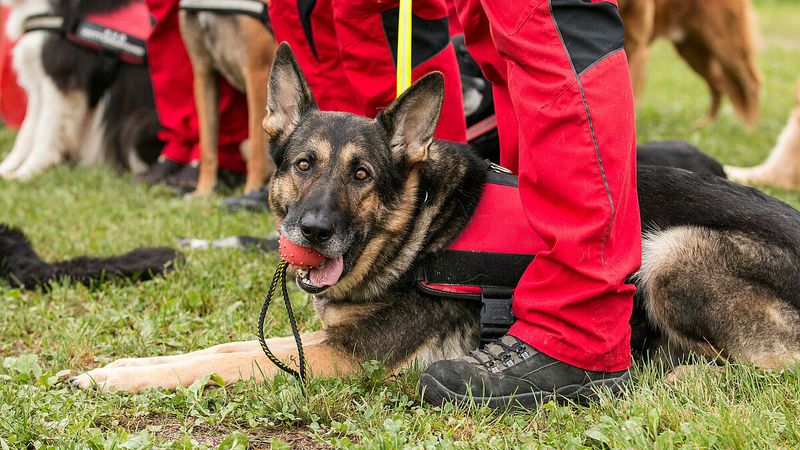
Search and rescue dogs are trained to locate missing persons in disaster zones, using their keen senses to detect humans buried under debris. Their agility and speed make them indispensable in emergency situations.
These dogs work closely with rescue teams, navigating difficult terrain to find survivors. Their ability to cover large areas quickly increases the chances of a successful rescue.
The involvement of dogs in search and rescue operations demonstrates the critical role animals play in saving lives. Their dedication and skill highlight the bond between humans and animals in life-saving efforts.
Camels as Desert Couriers
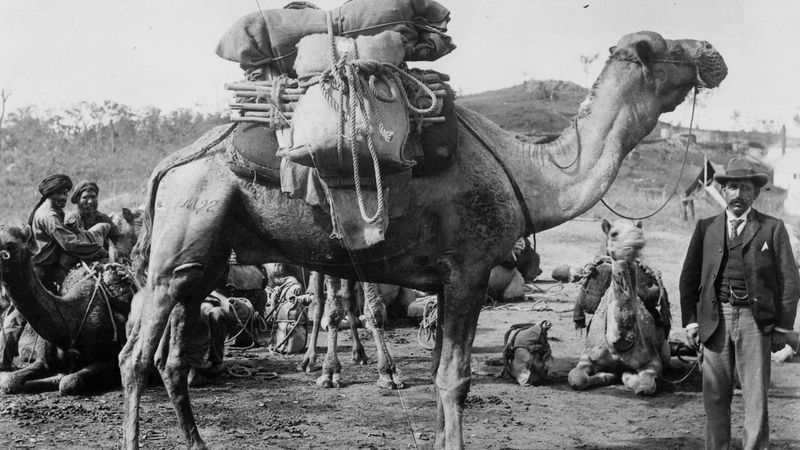
Camels are traditional desert couriers, transporting goods across arid regions where vehicles struggle. Their ability to travel long distances without water makes them ideal for these harsh environments.
These animals are not only carriers but also symbols of resilience and adaptability. Their role is essential in connecting remote communities and facilitating trade.
The use of camels in transportation underscores the enduring significance of animal labor in challenging terrains. Their contribution highlights the adaptability and endurance of animals in service to human needs.
Parrots in Conservation Awareness
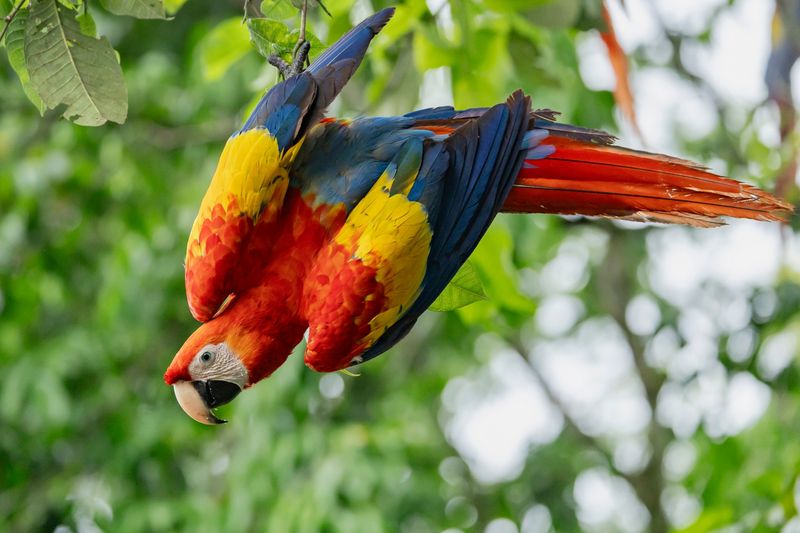
Parrots are used in conservation awareness campaigns, captivating audiences with their bright colors and intelligence. Their ability to mimic human speech engages people, raising awareness about environmental issues.
These birds help convey messages about habitat preservation and biodiversity, drawing attention to conservation efforts. Their charm and communication skills make them effective ambassadors for wildlife protection.
Parrots in conservation highlight the role of animals as educators, promoting ecological consciousness. Their involvement emphasizes the creative ways animals contribute to raising awareness and fostering a connection with nature.

